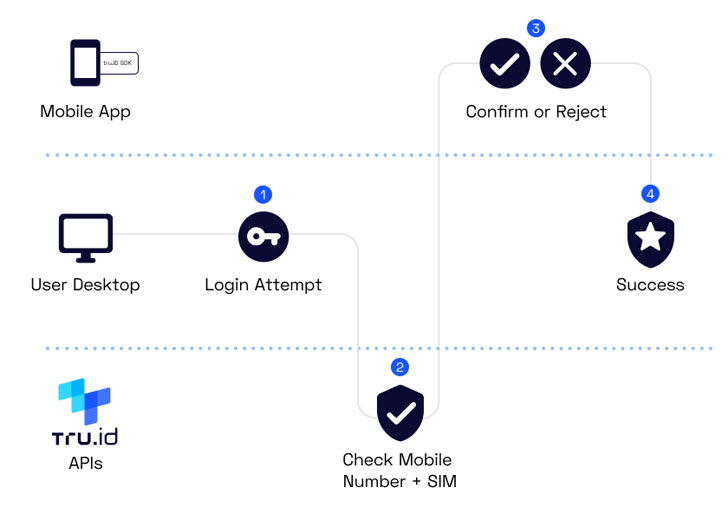Products You May Like
The average cost of a data breach, according to the latest research by IBM, now stands at USD 4.24 million, the highest reported. The leading cause? Compromised credentials, often caused by human error. Although these findings continue to show an upward trend in the wrong direction, the challenge itself is not new. What is new is the unprecedented and accelerated complexity of securing the workplace. CISOs/CIOs are dealing with legacy systems, cloud hosting, on-prem, remote workers, office based, traditional software, and SaaS.
How businesses adapted was laudable, but now that employees spread across locations, offices and homes – with more than half threatening not to return to offices unless hybrid working is implemented – the challenge morphs into securing a nonuniform perimeter.
We know passwords aren’t sufficient. Knowledge-based access is usually fortified with other forms of multi-factor authentication (MFA), such as auth apps or FIDO tokens, and in highly sensitive cases, biometrics.
Why strong IAM is essential for hybrid working
The era of ‘BYOD’ (Bring Your Own Device) has evolved into what Gartner calls Bring-Your-Own-Identity: employees are accessing data from a range of remote devices from a range of different locations.
Cybercriminals can intercept data in a variety of ways, from compromised credentials to phishing scams to man-in-the-middle attacks, which are made easier on public networks with no security controls, such as Wi-Fi hotspots at coffee shops or airports. If your employee access is only based on knowledge factors such as usernames and passwords, attackers could easily gain full access to sensitive data.
Hardware-based security tokens or dongles have gained popularity, particularly at the enterprise level. They generate a code for the user to enter when prompted, so that only the user possessing the token can gain access. But these separate, tiny hardware devices are not without their challenges.
Problems with hardware authentication
Cost — Security tokens cost between $50-$100 on average for a single device. As a result, these devices tend to be reserved only for a few high-risk individuals – while lower-profile employees are left vulnerable.
Lost devices — Hardware tokens can be lost, stolen, or forgotten, and employees often only notice right when they need access. Ordering new tokens is inconvenient and expensive.
UX — Finding the device and entering the code takes user effort, and can’t be easily used for rapid provisioning, personnel change, or work with outside contractors.
Attack risk — Hardware tokens are also not completely effective against MITM attacks – although they can’t be directly remotely accessed, a bad actor can trick the user into entering the code on a fraudulent version of the website/login page.
There is an innovative, new technology that provides a strong possession factor for IAM without extra hardware devices – and it’s in everyone’s hands already.
Mobile phone possession as an alternative to hardware tokens
The simpler, easier alternative to buying expensive tokens is to make use of something your employees already have: their mobile phone.
Using the advanced cryptographic security of the SIM card, mobile networks already authenticate customers securely and invisibly to allow calls and data. SIM-based authentication is tamper-resistant, real-time verification that works the same as chips in bank cards.
With no user action or codes to type, SIM-based authentication makes login simple for your employees, but keeps malicious actors out. By authenticating with the SIM card itself, rather than just the mobile number, it’s also possible to check for recent SIM swap activity, stopping account takeover attacks.
It’s much more cost-effective, deployable at scale, and universal, meaning every employee, not just a few, has the highest level of security. And unlike tiny and easily-lost hardware dongles, the mobile phone is an essential device that employees will already take with them everywhere.
Now, APIs by tru.ID open up SIM-based network authentication for enterprises and businesses to implement frictionless, secure verification.
Any additional concerns over user privacy are alleviated by the fact that tru.ID does not process personally identifiable information between the mobile network and its APIs. It’s purely a URL-based lookup.
See tru.ID SIM security solution in action
One of the ways to use tru.ID APIs is to implement a passwordless one-tap registration and login solution to access an enterprise system using a companion app. Here’s an example workflow:
tru.ID covers over 2 billion mobile phones in 20 markets and can be deployed in two ways. It can either be integrated directly into a company app (if present) with simple REST APIs and SDKs, or it can be rolled out with a tru.ID companion app that verifies employee access using their mobile credentials. tru.ID is keen to hear from the community to discuss case studies – just visit the website to see it in action in a demo or start coding.

